To protect Dhaka’s future, balance urbanisation with greenscapes

Rapid urbanisation, soaring temperatures, and the urgent need for sustainable solutions—are what currently defines the city of Dhaka, the capital of Bangladesh. The recent temperature surge in the city has been unprecedented. In April, it witnessed its second-highest temperature ever recorded, at 40.2 degrees Celsius. The highest temperature in Dhaka's history remains 42.3 degrees Celsius, recorded in April 1960. Heatwaves during the dry month of Chaitra, the Bangla calendar month that coincides with the period of mid-March to mid-April, intensified the discomfort, urging for a rethink of the country's urban strategies.
The intense heat absorbed by building walls and roofs from direct sunlight exposure can significantly raise temperatures, especially for top-floor flats in multistorey buildings in a city like Dhaka. Inadequate shade exacerbates this issue, leading to prolonged air conditioner use for comfort, resulting in higher energy consumption. The escalating demand for cooling devices has surged in Dhaka due to rising temperatures, which have increased by around three degrees Celsius over the past two decades, according to the Institute of Planning and Development (IPD).
This overuse of air conditioners has led to increased energy consumption both at the household and national levels. Studies have highlighted that a significant portion of electricity consumption in residential buildings is attributed to cooling purposes, with the latter noting that 38 percent of consumption is for cooling comfort provided by electric fans. According to a World Bank analysis in 2010, the majority of urban households in Dhaka consumed between 100 and 400 kWh of power per month, with wealthier households using over 400 kWh primarily due to increased air conditioner usage. This is ironic as air conditioners contribute to global warming.
Dhaka has been transforming into a city of roads, flyovers, and high-rises. Unfortunately, this development has come at the cost of widespread tree loss. Trees, crucial for heat mitigation, are being uprooted during road and flyover construction. Foliage gives way to concrete, and the microclimate within the city diverges significantly from rural surroundings. Dhaka's outdoor temperature registers 1-1.5 degrees higher than the adjacent regions. While development is essential for progress, preserving trees is equally critical. These natural air conditioners absorb heat, release moisture, and maintain ecological balance. Striking the balance between urban growth and safeguarding green spaces is vital for Dhaka's resilience against extreme temperatures and ensuring a sustainable future.
The metro rail system has emerged as a popular mass transit solution for Dhaka. Its expansion promises efficient connectivity and reduced traffic congestion. Integrating metro lines with greenways and blue nodes can revolutionise urban mobility. Imagine a network where metro stations seamlessly blend with green corridors. These integrated greenways, adorned with trees, shrubs, and native plants, would offer respite from the concrete jungle. At strategic points, blue nodes, natural water bodies, or revitalised canals become urban oases. Imagine strolling along a tree-lined path with glimpses of shimmering water, a harmonious blend of nature and infrastructure.
These authors conducted several studies on the plausible impact of integrated greenways in ameliorating street canyon microclimates of residential Dhaka, ensuring pedestrian thermal comfort for the urbanites, between 2016 and 2023. These studies revealed that Dhaka's street canyons are thermally uncomfortable for pedestrians with raised air temperature (TA), mean radiant temperature (MRT), reduced relative humidity (RH), and wind speed (WS) during hot summer days. The authors steered field investigation in 13 points of eight street canyons for bare (no tree) and green or greenway (large green trees on either side of the roads) canyons. The field investigation showed that the greenway identical street canyons showed lower TA by 0.73-1.34 degrees and higher RH up to 0.44-1.58 percent than the bare canyons.
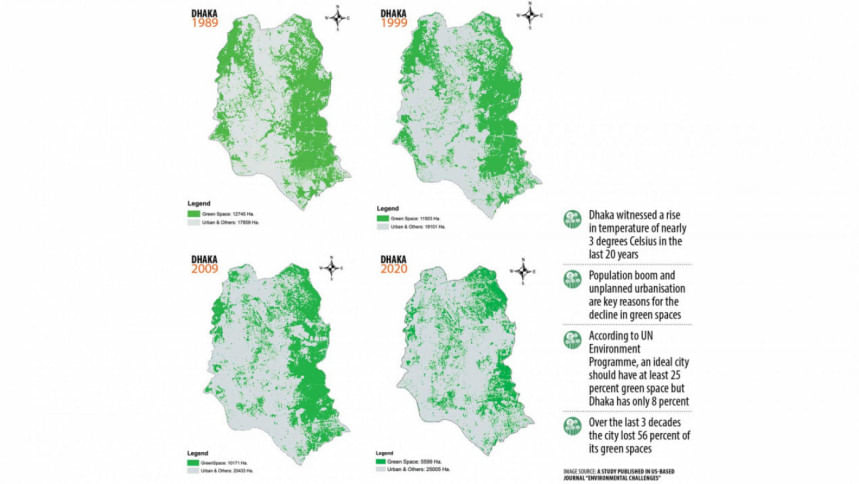
Dhaka's roads are mostly categorised into primary, secondary, and tertiary levels. While tertiary roads mostly serve as residential access routes, primary and secondary roads can be strategically integrated with greenways. Transforming selected roads into greenways while preserving the alternative ones for vehicular access enhances thermal comfort. Even tertiary roads, transformed into partial or half greenways or fully orthodox pedestrian greenways, effectively moderate temperatures.
Outside Dhaka, cities following similar development trajectories should reevaluate their strategies. Preservation should take precedence over relentless construction. While development is important and inevitable, it should be harnessed for climatic advantage. Incorporating blue and green networks during planning ensures a sustainable future. Reducing reliance on air coolers and promoting natural ventilation by keeping windows open enhances comfort. Transforming hard surfaces into softscapes, such as porous pavements, improves the microclimate. These materials allow for evapotranspiration, cooling the surroundings. Cool pavements, including PICP, can tremendously reduce daytime TA and MRT.
Edifices can contribute significantly to temperature reduction. Green roofs act as insulators, absorbing excess heat and providing additional green space. Vertical green walls enhance aesthetics, improve air quality, and reduce heat absorption. Urbanisation does not need to come at the cost of green spaces; rather, it should harmonise with them.
With the support of the UK-based Wellcome Trust, Griffith University, the University of Sydney, BMT, and Buet jointly conducted a three-year research project on the escalating heat exposure at garment factories in Bangladesh and its impact on workers. Workers at RMG factories endure physical discomfort from excessive heat exposure exacerbated by global warming, significantly reducing their productivity. This reduction is projected to reach five percent of the workers' total work hours by 2030.
Bangladesh is predicted to experience an increase of temperature by two degrees Celsius by 2050, which will lead to more frequent heatwaves, posing challenges for RMG factories. Increased reliance on air conditioners, as well as coal and gas for power generation, exacerbate the situation. However, proactive measures can reduce temperatures by two to three degrees through natural heat control methods, preserving work hours and minimising worker discomfort. A pilot project implementing climate change heat reduction recommendations can pave the way for sustainable solutions.
Dhaka thrives as a city of possibilities, a place where progress aligns with nature, ensuring comfort, resilience, and well-being for all. Its destiny hinges on all urbanites' collective commitment to sustainable urbanisation. Let Dhaka be a city where progress coexists harmoniously with nature, a beacon of sustainable urban living, ensuring comfort, resilience, and well-being for all.
Dr Md Ashikur Rahman Joarder is professor of environment and energy at the Department of Architecture, Bangladesh University of Engineering and Technology (Buet).
Zarrin Tasnim is lecturer at the Department of Architecture, Fareast International University (FIU).
Views expressed in this article are the authors' own.
Follow The Daily Star Opinion on Facebook for the latest opinions, commentaries and analyses by experts and professionals. To contribute your article or letter to The Daily Star Opinion, see our guidelines for submission.

 For all latest news, follow The Daily Star's Google News channel.
For all latest news, follow The Daily Star's Google News channel. 
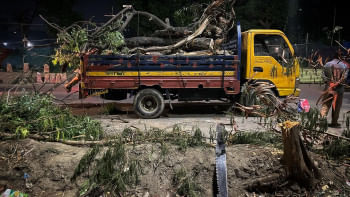




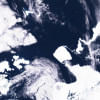
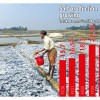

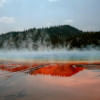


Comments